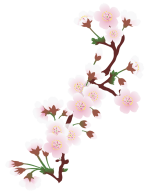 Haiku (俳句) is a type of short form poetry originally from Japan. Traditional Japanese haiku consist of three phrases that contain a kireji, or “cutting word”, on (phonetic units similar to syllables) in a 5, 7, 5 pattern, and a kigo, or seasonal reference.
Haiku (俳句) is a type of short form poetry originally from Japan. Traditional Japanese haiku consist of three phrases that contain a kireji, or “cutting word”, on (phonetic units similar to syllables) in a 5, 7, 5 pattern, and a kigo, or seasonal reference.
Similar poems that do not adhere to these rules are generally classified as senryu. We label here as “freeform”.
Haiku originated as an opening part of a larger Japanese poem called renga. These haiku written as an opening stanza were known as hokku and over time writers began to write them as stand-alone poems.
Haiku was given its current name by the Japanese writer Masaoka Shiki at the end of the 19th century.
Originally from Japan, haiku today are written by authors worldwide.
Haiku in English and haiku in other languages have different styles and traditions while still incorporating aspects of the traditional haiku form.
Non-Japanese haiku vary widely on how closely they follow traditional elements. A minority movement within modern Japanese haiku (現代俳句, gendai-haiku), supported by Ogiwara Seisensui and his disciples, has varied from the tradition of 17 on as well as of taking nature as their subject.
In Japanese, haiku are traditionally printed as a single line, while haiku in English often appear as three lines. Haiku are traditionally about nature.
There are several other forms of Japanese poetry related to haiku, such as tanka, as well as other art forms that incorporate haiku, such as haibun and haiga.
Source: Wikipedia
